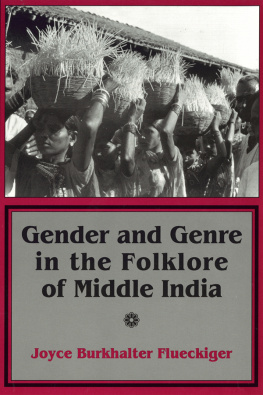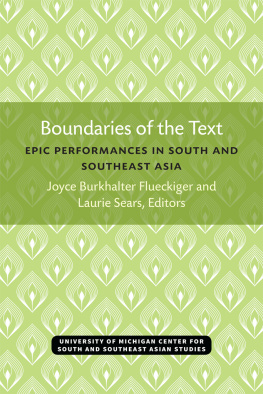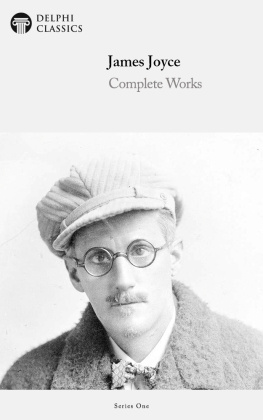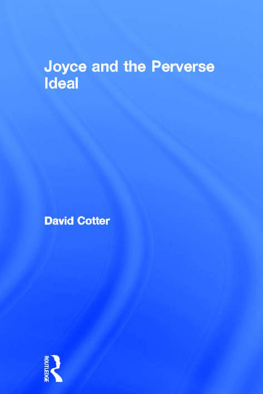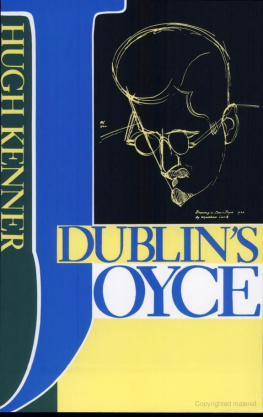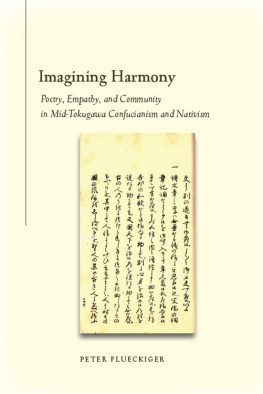Joyce Burkhalter Flueckiger - When the World becomes Female
Here you can read online Joyce Burkhalter Flueckiger - When the World becomes Female full text of the book (entire story) in english for free. Download pdf and epub, get meaning, cover and reviews about this ebook. year: 2013, publisher: Indiana University Press, genre: Home and family. Description of the work, (preface) as well as reviews are available. Best literature library LitArk.com created for fans of good reading and offers a wide selection of genres:
Romance novel
Science fiction
Adventure
Detective
Science
History
Home and family
Prose
Art
Politics
Computer
Non-fiction
Religion
Business
Children
Humor
Choose a favorite category and find really read worthwhile books. Enjoy immersion in the world of imagination, feel the emotions of the characters or learn something new for yourself, make an fascinating discovery.

- Book:When the World becomes Female
- Author:
- Publisher:Indiana University Press
- Genre:
- Year:2013
- Rating:4 / 5
- Favourites:Add to favourites
- Your mark:
- 80
- 1
- 2
- 3
- 4
- 5
When the World becomes Female: summary, description and annotation
We offer to read an annotation, description, summary or preface (depends on what the author of the book "When the World becomes Female" wrote himself). If you haven't found the necessary information about the book — write in the comments, we will try to find it.
Joyce Burkhalter Flueckiger: author's other books
Who wrote When the World becomes Female? Find out the surname, the name of the author of the book and a list of all author's works by series.
When the World becomes Female — read online for free the complete book (whole text) full work
Below is the text of the book, divided by pages. System saving the place of the last page read, allows you to conveniently read the book "When the World becomes Female" online for free, without having to search again every time where you left off. Put a bookmark, and you can go to the page where you finished reading at any time.
Font size:
Interval:
Bookmark:
WHEN THE WORLD BECOMES FEMALE
JOYCE BURKHALTER FLUECKIGER

This book is a publication of
Indiana University Press
Office of Scholarly Publishing
Herman B Wells Library 350
1320 East 10th Street
Bloomington, Indiana 47405 USA
iupress.indiana.edu
Telephone orders 800-842-6796
Fax orders 812-855-7931
2013 by Joyce Burkhalter Flueckiger
All rights reserved
No part of this book may be reproduced or utilized in any form or by any means, electronic or mechanical, including photocopying and recording, or by any information storage and retrieval system, without permission in writing from the publisher. The Association of American University Presses Resolution on Permissions constitutes the only exception to this prohibition.
 The paper used in this publication meets the minimum requirements of the American National Standard for Information SciencesPermanence of Paper for Printed Library Materials, ANSI Z39.48-1992.
The paper used in this publication meets the minimum requirements of the American National Standard for Information SciencesPermanence of Paper for Printed Library Materials, ANSI Z39.48-1992.
Manufactured in the United States of America
Library of Congress Cataloging-in-Publication Data
Flueckiger, Joyce Burkhalter.
When the world becomes female : guises of a South Indian goddess / Joyce Burkhalter Flueckiger.
pages cm
Includes bibliographical references and index.
ISBN 978-0-253-00952-4 (cloth : alk. paper)ISBN 978-0-253-00956-2 (pbk. : alk. paper)ISBN 978-0-253-00960-9 (e-book)
1. Gangamma (Hindu deity)CultIndiaTirupati. 2. Worship (Hinduism) 3. Tirupati (India)Religion. I. Title.
BL1225.G362F58 2013
294.5'2114dc23 2012051547
1 2 3 4 5 18 17 16 15 14 13
For Velcheru Narayana Rao
who introduced me to the imaginative worlds of Telugu
and has been a constant conversation partner in this work
This is a book about the South Indian goddess Gangamma, whose rituals and narratives offer a range of possibilities and debates about gender at both cosmological and human levels. Gangamma becomes most visible and grows into her fullest power during her annual hot-season festival, during which time, for one week, ultimate reality is imagined and experienced as female.
The relationship between the everyday lives of women and the mythical lives of goddessesmore specifically, whether or how the goddess may be a model or source of empowerment of womenhas been debated in scholarly work and has caught the imagination of many others who have not grown up with goddesses (Hiltebeitel and Erndl 2000; Gold 1994; McDermott 2003). My research with Gangamma worshippers suggests that, in this context, the relationship between the goddess and human women is not of one imitation or modeling, but an empowering relationship in which their shared nature as possessors of shakti (female power) is asserted and performed. During Gangammas festival, female celebrants are the unmarked gender; they only intensify and multiply what they already do on a daily or weekly basis for the goddessthat is, feed her. Men (and aggressive masculinity), on the other hand, must be transformed (by taking female guises) to be in the presence of an excessive (ugra) goddess. These gendered possibilities are characteristic of the south Indian artisan/trader castes that traditionally celebrate Gangammas festival, possibilities that are being threatened both by processes of brahminization of Gangammas largest temples and the growth of middle-class aesthetics and gender and sexual mores.
The story of how I first entered the worlds of Gangamma is told in the introduction, first as a curious onlooker and then gradually as an ethnographer who was drawn into the imaginative worlds of Gangamma and the lives of many who share that world. My earlier ethnographic research had been conducted in rural central India (Chhattisgarh) and the city of Hyderabad, during which times my primary research language was Hindi/Urdu and its regional forms. Before I began my long-term research in Tirupati in 1999, I learned the Telugu script and basic grammar in the United States, and then studied Telugu intensively for two months in Hyderabad. Many nounssuch as ugram, shakti, vesham, gramadevataidioms, narratives and narrative motifs, cultural concepts, and practices are shared between Hindi and Telugu, which contributed to my cultural fluency and confidence, if less-than-desired linguistic fluency. On each research trip, I have worked with Telugu native-speaker fieldwork associates and friends, with whom I studiously translated and discussed the voice recordings of conversations and narratives that appear in this book. Because I worked with three fieldwork associates and numerous friends for longer and shorter periods of time over nearly twenty years, in order to avoid confusion to the reader, I refer to them as fieldwork associates or friends, rather than by name in the chapters that follow.
I first attended Gangammas festival (jatara) in 1992 and 1993 with V. Narayana Rao, David Shulman, and Don Handelman; and many of the ideas for this book took root through our long discussions over the days and evenings of those jataras, for which I offer them my deepest thanks. I returned to Tirupati for the 1996 jatara with a friend and fellow folklorist, N. Lakshmi, who is a school teacher in Rajahmundry. That same year, an elder Tamil-speaking friend from Hyderabad, Revati Thangavelu, joined us for the last few days of the jatara; she gave invaluable assistance and wisdom in my initial interactions with the Tamil Gangamma devotee who is the focus of . Revati and her husband Thanganne always had an open door waiting for me in Hyderabad in my comings and goings to Tirupati, offering encouragement and support on many levels, including endless cups of tea and a listening ear to both the joys and frustrations of fieldwork.
By the time I had attended three jataras, I realized that several of the women with whom I hoped to interact more closely, including the Mudaliar-caste matriarch who used to serve Gangamma at her largest Tirupati temple (. Vimalas love of language is infectious, and we spent many hours translating voice recordings we had made together and discussing the nuances of significant individual words and idioms. Surya Prakash Gudi, who at the time was a doctoral candidate in anthropology at Sri Venkatesvara University, assisted me on two short trips to Tirupati in 2010 and 2011. Finally, I gratefully acknowledge the tangible and intangible assistance and dependable friendship over these many years of V. Gangadhar, Professor of Anthropology, and Peta Srinivasulu Reddy, Professor of Telugu, both from Sri Venkatesvara University, who first introduced us to the Kaikala family in 1992.
The primary Tirupati families and individuals with whom I worked for this project never questioned why I was there; they understood the attraction of the goddess and assumed I would keep coming back. Perhaps less clear to them was why it seemed to take me so long to understand Gangamma and her festival, as indicated by one female householder who exclaimed that she had already answered several years earlier a question I was now asking. I offer here special thanks, for opening their lives to me and their gracious hospitality, to the Kaikala family, CKR and Koteshvaramma, Subbarama Reddy and Dhanalakshmi of Avilala, storytellers Rajeshvaramma and Sumati, purana pandita Annapurna, Pujaramma and Veshalamma, the female devotee who is
Next pageFont size:
Interval:
Bookmark:
Similar books «When the World becomes Female»
Look at similar books to When the World becomes Female. We have selected literature similar in name and meaning in the hope of providing readers with more options to find new, interesting, not yet read works.
Discussion, reviews of the book When the World becomes Female and just readers' own opinions. Leave your comments, write what you think about the work, its meaning or the main characters. Specify what exactly you liked and what you didn't like, and why you think so.

